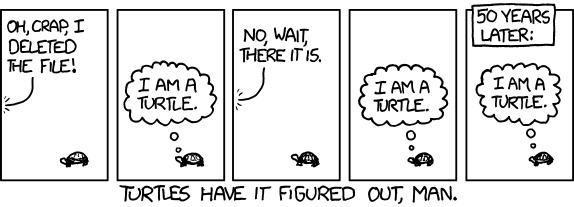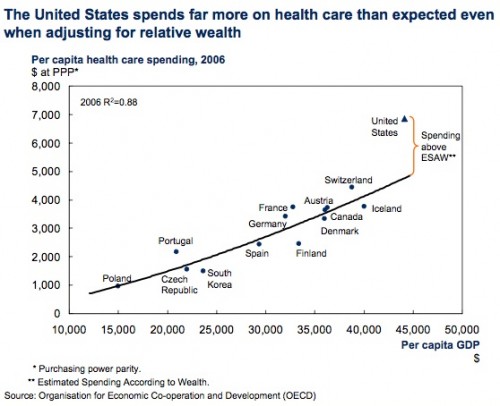Contributed by , March 29, 2011 ...
There is too much legal mumbo jumbo on this birther business.
To clarify things, we should all agree that there are two (and only two) kinds of American Citizens: Natural born American Citizens and Naturalized Americans.
That's it. Two flavors only.
A natural born citizen enters the world an American citizen. A naturalized American citizen enters the world with some other citizenship, and then goes through a naturalization process to become an American citizen. Feel free to read this paragraph a second time, because it is essential to understanding things.
Most natural born American citizens are born in the United States. However, not all are born in the United States.
I offer as exhibits A and B my two children, both born on Italian soil. Their parents (my wife and I) are natural born American citizens born in California and Connecticut, respectively. Work took us to Italy, where our children were born. (We are now back in the United States, where they have lived the bulk of their lives).
When each child was born, we took our passports and the child's local birth certificate down to the United States Consulate in Milan, Italy, and obtained a Consular Report of Birth Abroad and a U.S. passport for our new bundle of joy. Automatically. Based on our citizenship.
No questions. No lengthy process. No naturalization. I repeat: no naturalization. Since we are American citizens, they are American citizens. At birth. I.e. "natural-born American citizens". For those who like Latin legal terms, we are talking jus sanguinis (citizenship through the law of bloodline, or lineage). That's the law and our children are living proof. Both are eligible to be President.
Being born on American soil has importance only in situations where the parents are not American citizens.
Exhibit C could be Mitt Romney's father, George Romney. George was born of American parents in Mexico. His family returned to the United States where he became the CEO of American Motors (remember the old Ramblers?) and governor of the State of Michigan. He ran for the Republican nomination for President in 1968. He didn't get the nomination in the end, but that had nothing to do with where he was born.
Exhibit D could be Arizona Senator and 2008 Republican Presidential candidate John McCain, who was born in the Panama Canal Zone, while his father was serving there in the U.S. armed forces. This situation is more nuanced, since, at the time, the U.S. controlled the Canal Zone. This did not stop some people from saying this American hero should have been excluded from running for President. They were wrong.
Think about it. Why on earth would we want to exclude the offspring of
Americans who are serving abroad in the United States Armed Forces, or the U.S.
Diplomatic Corps, or studying or working abroad? If an American couple from
Buffalo happens to be visiting friends in Ontario and the pregnant wife goes
into early labor and delivers in Toronto, should the child be excluded from the
Presidency because he or she was accidentally born in Canada? Of course not.
So let's pause here a moment and agree that the children of American citizens are natural born citizens of the United States and therefore eligible to serve as President, due to the operation of jus sanguinis under U.S. law.
I note as well that only one parent needs to be a U.S. Citizen for all of this to work under the law. Witness my sister who is married to an Englishman and whose two sons, born in the United Kingdom, are natural born American citizens with Consular Reports of Birth Abroad and U.S. passports.
Now, what of the case of Barack Obama? This media controversy revolved around citizenship based on place of birth, or jus soli, for those legal Latin lovers. Was he born in Hawaii or not? But this misses the point of jus sanguinis, though the media has not picked up on this in any well-reasoned way. His mother was an American citizen. That is enough to make him "natural-born American" regardless of where he was born, unless there is a specific disqualifying factor; e.g. if he exclusively took, or was given, the citizenship of his father (who was a British subject colonial citizen) and not the citizenship of his mother. Or that the place of his birth conferred on him automatic and exclusive citizenship, which he embraced (jus soli). Nothing like this pertains in his case.
Let me add that someone can be born with two citizenships and still be a natural born American citizen. Certain countries may confer non-exclusive citizenship on babies born on their soil; others may confer citizenship on the children and even grandchildren of their emigrants. Hey, that's their business. It is a separate matter and has no effect on the operation of U.S. law, nor should it. A natural born American under U.S. law is a natural born U.S. citizen. Period.
Arguments that try to tease out exceptions to natural born status under either jus soli or jus sanguinis end up sounding ridiculous. The binary approach is the only one that makes any sense.
The law should be clear and simple on citizens: natural born or naturalized. One or the other.
Let's get this clarity into the media, not just for Barack Obama, but for the sake of children of our loyal service men and women and others who were naturally born as U.S. citizens abroad. They are fully eligible to become President of our great country.













